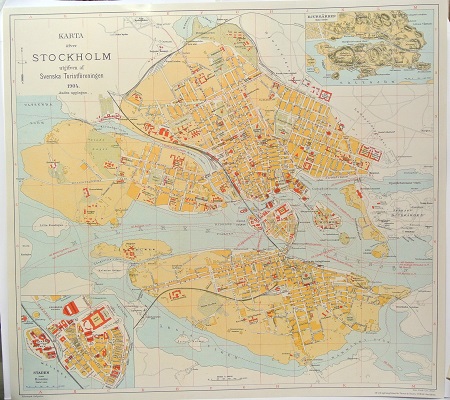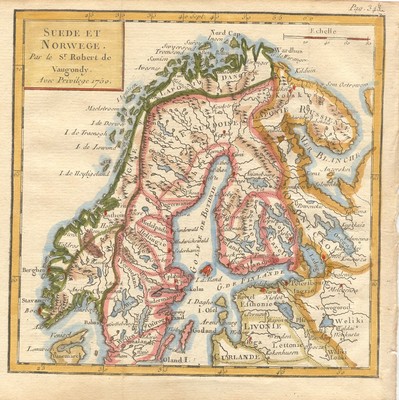Cellarius, Andreas.
Biografiska uppgifter:(c. 1596, Neuhausen, – 1665, Hoorn)
Cellarius was a Dutch-German cartographer, best known for his Harmonia Macrocosmica of 1660, a major star atlas, published by Johannes Janssonius in Amsterdam.
He was born in Neuhausen (now a part of Worms), and was educated in Heidelberg. The Protestant Cellarius may have left Heidelberg at the onset of the Thirty Years' War in 1618 or in 1622 when the city came in Catholic hands. His activities are unclear at this time but based on his later works it is conjectured he spent time in Poland and may have even worked as a military engineer there. In 1625 he married Catharina Elt(e)mans in Amsterdam, where he worked as school master of a Latin School. After a brief stay in The Hague, the family moved to Hoorn. From 1637 until his death he was rector of the Latin School in Hoorn, where Pieter Anthoniszoon Overtwater was conrector.
He published on fortification and on Poland.
The minor planet 12618 Cellarius is named in his honour.
Andreas Cellarius
The Dutch-German mathematician and cosmographer Andreas Cellarius is well known to map historians and historians of astronomy as the author of the Harmonia Macrocosmica (first published in 1660), a folio-sized work that is commonly regarded to be one of the most spectacular cosmographical atlases that was published in the second half of the seventeenth century.
Until recently nearly nothing was known about the life and background of Andreas Cellarius, who, on the title page of the Harmonia Macrocosmica, identified himself as the rector (headmaster) of the Latin School at Hoorn (a town to the north-east of Amsterdam). He further stated that he came from the German Rhineland area known as the Pfaltz, but neither the town or the year of his birth were known, nor when and where he died. Recent research in the municipal archives of Amsterdam, Hoorn and The Hague has now made it possible to provide the following sketch of his life and career.
Early Life and Education
Andreas Cellarius was born around the year 1596 in Neuhausen, a small town near Worms. He was the son of Andreas Cellarius, who was a pastor in Neuhausen from 1596 to 1599 and later moved to Heidelberg – the name of his mother is not known. After his education at the Sapierzkolleg in Heidelberg, Andreas Cellarius enrolled as a student at the University of Heidelberg in 1614 but it is not known how long he studied there or which lectures he attended.
During the next decade, the whereabouts of Andreas Cellarius are unknown. It has been surmised, on the evidence of his later publications on Poland and on the art of fortification, that he may have travelled through Poland during this period and may even have pursued a military career there but archival evidence for this is lacking.
Emigration to Holland
Exactly when Andreas Cellarius settled in Holland is not known but in 1625 he is mentioned in the marriage records of the city of Amsterdam as a 30-year old schoolmaster from ‘Niewhousen’. He married Catharina Eltmans in the same year and their first son, also named Andreas after his grandfather and great-grandfather, was born in the next year. Two years later, in 1628, their daughter Catharina was baptized in Amsterdam.
Although archival records are lacking, it appears that Andreas Cellarius worked as a schoolmaster at the Latin School on the Koestraat near the Oude Zijds.
Around 1630 Andreas Cellarius moved to The Hague where he was employed as a schoolmaster at the Latin School in the former St. Agnietenklooster on the Zuilingstraat. Two sons, Johannes and Joris, were baptized in The Hague in 1631 and 1635.
Rectorship at Hoorn
In 1637 Andreas Cellarius moved to Hoorn, where he was appointed as rector of the Latin School in the former Ceciliaklooster. All of Andreas Cellarius’s scholarly works were published during his rectorship in Hoorn.
Andreas Cellarius died in February/March of 1665 – the location of his grave is not known. His eldest son Andreas died in November of the same year and was buried in a rented grave near to the choir in the Grote Kerk of Hoorn.
Publications of Andreas Cellarius
His earliest known publication was on fortification, the mathematical science of designing impregnable city walls and defence systems, and was entitled Architectura Militaris, oder Gründtliche Underweisung der heuttiges tages so wohl in Niederlandt als andern örttern gebräuchlichen Fortification oder Vestungsbau. It was written in German and was published in 1645 by the Amsterdam publisher Jodocus Janssonius (an unchanged reprint appeared in 1656).
In 1652 the Amsterdam publisher Gillis Jansz Valckenier printed his description of Poland, entitled Regni Poloniae, Magnique ducatus Lituaniae: Omniumque regionum juri Polonico Subjectorum: Novissima descriptio, Urbium potissimarum icones elegantissimas & delinitionem hujus Regni Geographicam oculis sujiciens. It was reprinted in 1659 and a Dutch translation, entitled Het Koninckrijck Poolen en toebehoorende landen: Vervaatende een korte doch klaare beschrijvinghe aller Landtschappen en Steden, in dit Ryck gelegen, was published in 1660 by Gillis Jansz Valckenier & Hendrik Prins.
Andreas Cellarius also wrote a few laudatory poems on Henrick Bruno, the assistant rector of the Latin School in Hoorn and a former tutor of Constantijn and Christiaan Huygens, which were printed in Bruno’s Hooghe-Liedt (a Dutch versification of Solomon’s Song of Songs).
His best known work, the Harmonia Macrocosmica, was published in 1660 (a reprint was issued in 1661) by the Amsterdam publisher Johannes Janssonius (1588-1664) as a cosmographical supplement to his Atlas Novus. Andreas Cellarius had already started working on this atlas before 1647 and intended it to be a historical introduction for a two-volume treatise on cosmography but the second part was never published.
The plates of his Harmonia Macrocosmica were reprinted (without the Latin commentary) in 1708 by the Amsterdam publishers Gerard Valk (1651/52-1726) and Petrus Schenk the Younger (1660-1711).
Bland arbeten:
Harmonia macrocosmica sea atlas universalis et novus. Amsterdam: G. Valck and P. schenk, 1708.
Folio (530 x 320mm), allegorical title engraved by F. H. van Hoven, printed in red and black with woodcut vignette, letterpress title with contents and 29 double-page engraved cosmographical charts finely coloured by hand, without text.
One of the most fascinating achievement from the golden age of Dutch cartography. The Harmonia macrocosmica is the only atlas of the period dealing with astronomy.
Unlike the late celestial atlases, the Cellarius charts demonstrated various ancient and contemporary cosmological ideas, rather than just the names and positions of the stars. The purpose of the book was to assess different attempts to discover the underlying harmony of the universe. The charts represent the highest levels of seventeenth-century astronomical thought, with the diagram showing aspects of the three great theories on the nature of the universe; the Ptolemaic, the Copernican and the Brahean.
Tillbaka till början.



